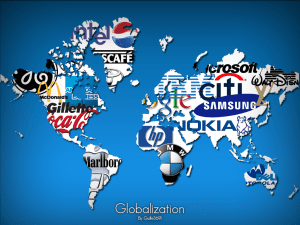 Late last year, I wrote a piece suggesting that in a complex world which is anything but flat, dots on a global map don’t actually make you global. And that a combination of fearless listening and generous understanding can, therefore, be critical to effective international PR.
Late last year, I wrote a piece suggesting that in a complex world which is anything but flat, dots on a global map don’t actually make you global. And that a combination of fearless listening and generous understanding can, therefore, be critical to effective international PR.
And that got me thinking even more about that term which is thrown about like confetti – “global.” Agencies, in particular, place a great deal of importance on how global, seamless and integrated they are. And while operating in the locations in which clients need you is naturally vital, I would caution that blanket uniformity is not necessarily either an aspiration or an asset.
By contrast, what strikes me is that beyond the odd premiership football club, F1, cultural memes like Psy’s Gangnam Style or certain film franchises, very little is actually truly global. Indeed, today’s “global” brands and corporations are largely a function of their ability to take on a compelling local flavor – perhaps suggesting that our old friend “glocal” is the order of the day? But even then, I worry that glocalisation is as much of a red herring as globalization, practically speaking, when it comes to international PR.
Why? Because while it’s certainly important to be able to think truly globally and act genuinely locally, when it comes to structuring campaigns, building teams, managing issues across borders or hiring “global” agency resources, it is rarely either of these two extremes that actually matters. The key, rather, is the extent to which you can do all of these things, with a reasonable degree of cogency and consistency, across multiple national centers – in other words inter-nationally.
Indeed, it the ability to create the necessary lateral links that can make the difference between success or failure. It’s no coincidence that the diamond is the hardest substance on earth by dint of its internal bonds. So, regardless of whether you’re in-house or in-agency, I hope that the following questions will be helpful to consider as a starter for ten:
1. To what extent is this endeavor actually truly global – or is it actually international or regional or in nature?
2. Which geographies are genuinely important to the success or failure of what we’re doing?
3. Do we have an acceptable minimum quality threshold and resource level for all the markets involved?
4. Have we genuinely thought through how local nuances might cause that quality model to flex?
5. What balance is appropriate for our organization between command-and-control and local empowerment?
6. Is our central “global” strategy pliable enough truly to take into account local sensitivities and imperatives?
7. Do we have sufficient listening processes and feedback loops in place even to know or notice?
8. How strong are the lateral ties between the local centers – not only bi-laterally with the center, but also between each other?
9. What discussion and reporting mechanisms do we have in place to ensure co-ordination is meaningful and dialogue truly two-way?
10. Do those colleagues in the local centers actually know each other personally and if not, how can we rectify this?
To some extent, these are, of course, age-old questions for our industry and core to the thinking of business expert David Maister and others in how to manage professional services firms. However, I have been really struck recently that it is the lateral bonds – rather than just the local assets, the ability to command-and-control vertically or the “seamlessness” of the global construct – that are becoming ever more important.
Among many other things, Ketchum has continued to invest throughout the downturn in the in-person meetings so critical to the relationships that underpin true lateral bonds. So, who else out there has a killer app for doing effective “global” PR?
This article first appeared on PRmoment.
Image credit: polipedia.eu